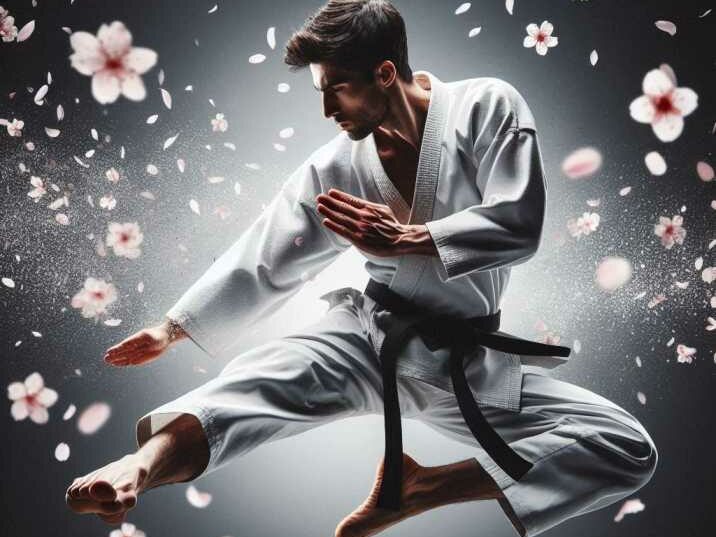The Meaning of Jeet Kune Do: A Comprehensive Guide
Introduction
Table of Contents
Jeet Kune Do (JKD) is a unique martial art created by the legendary Bruce Lee. It is not just about fighting; it is a philosophy and a way of life. This article will explore the meaning of Jeet Kune Do, its history, and its principles. We will also discuss its techniques, benefits, and frequently asked questions. By the end of this article, you’ll have a comprehensive understanding of JKD and why it is so special.
Table of Contents
- What is Jeet Kune Do?
- History of Jeet Kune Do
- Principles of Jeet Kune Do
- Techniques in Jeet Kune Do
- Benefits of Practicing Jeet Kune Do
- FAQs about Jeet Kune Do
What is Jeet Kune Do?
Jeet Kune Do means “The Way of the Intercepting Fist.” It is a martial art developed by Bruce Lee in 1967. Unlike traditional martial arts, JKD is not fixed or patterned. It is a flexible and adaptable approach to combat, emphasizing simplicity, directness, and personal freedom.

The Philosophy
Bruce Lee believed that martial arts should be simple and practical. He aimed to eliminate unnecessary movements and focus on what works. JKD is about being free and not bound by strict rules. This philosophy encourages practitioners to adapt to different situations and use techniques that are effective.
The Name
The name “Jeet Kune Do” comes from the idea of intercepting or stopping an opponent’s attack before it fully develops. It’s about being fast, efficient, and proactive in combat. The focus is on intercepting the opponent’s moves and countering them effectively.
History of Jeet Kune Do
Bruce Lee was a renowned martial artist and actor. He trained in Wing Chun, a traditional Chinese martial art, but felt it had limitations. This led him to develop his own martial art, incorporating elements from various disciplines.
Early Influences
Bruce Lee was influenced by many martial arts, including boxing, fencing, and judo. He took what he liked from each and discarded what he found unnecessary. His exposure to different fighting styles helped him create a more comprehensive and effective system.
Birth of Jeet Kune Do
In 1967, Bruce Lee officially named his new martial art Jeet Kune Do. He wanted to create a system that was practical and effective in real-life situations. JKD was designed to be a dynamic and evolving martial art, free from the constraints of traditional forms.
Principles of Jeet Kune Do
Jeet Kune Do is based on several key principles. These principles guide how practitioners train and fight, ensuring that they remain effective and adaptable.
Simplicity
JKD focuses on simple techniques that are easy to learn and use. Complicated moves can be slow and ineffective. By keeping techniques simple, practitioners can respond more quickly and efficiently in combat.
Directness
Being direct means taking the shortest route to achieve your goal. In JKD training, this means striking quickly and efficiently. Directness eliminates unnecessary movements, allowing practitioners to maximize their effectiveness.
Freedom
JKD encourages practitioners to be free and not restricted by rigid forms. It’s about adapting to the situation and using what works best. This principle emphasizes personal expression and the ability to modify techniques to fit individual needs and circumstances.
Techniques in Jeet Kune Do
Jeet Kune Do uses a variety of techniques from different martial arts. These techniques are chosen because they are effective and practical.
Striking
JKD includes punches, kicks, and elbow strikes. The goal is to be fast and powerful. Striking techniques are designed to incapacitate an opponent quickly and efficiently.
Trapping
Trapping involves controlling an opponent’s limbs to create openings for strikes. It is a key part of JKD, allowing practitioners to neutralize an opponent’s attacks and gain the upper hand.
Grappling
JKD also includes grappling techniques, such as throws and joint locks. These techniques are useful in close combat and provide practitioners with a well-rounded set of skills for different situations.
Benefits of Practicing Jeet Kune Do
Practicing Jeet Kune Do offers many benefits. It can improve your physical fitness, mental focus, and self-defense skills.
Physical Fitness
JKD training includes exercises that build strength, speed, and endurance. It is a great way to stay in shape and maintain overall health. Regular practice can lead to improved cardiovascular health, muscle tone, and flexibility.
Mental Focus
JKD teaches you to stay calm and focused in challenging situations. This can help you in all areas of life, including school, work, and personal relationships. The mental discipline developed through JKD practice can enhance concentration and decision-making skills.
Self-Defense
JKD is designed to be effective in real-life situations. Learning JKD can help you protect yourself and others. The techniques and principles of JKD training provide practical self-defense skills that can be applied in various scenarios.
Conclusion
Jeet Kune Do is more than just a martial art. It is a way of thinking and living. Created by Bruce Lee, it focuses on simplicity, directness, and freedom. By practicing JKD, you can improve your physical fitness, mental focus, and self-defense skills. Whether you are a beginner or an experienced martial artist, JKD has something to offer. Its unique philosophy and practical techniques make it a valuable martial art for anyone interested in personal growth and self-improvement.
FAQs about Jeet Kune Do
Q. What does Jeet Kune Do mean?
Jeet Kune Do means “The Way of the Intercepting Fist.”
Q. Who created Jeet Kune Do?
Bruce Lee created Jeet Kune Do in 1967.
Q. What are the key principles of Jeet Kune Do?
The key principles of Jeet Kune Do are simplicity, directness, and freedom.
Q. Is Jeet Kune Do a traditional martial art?
No, Jeet Kune Do is not a traditional martial art. It is flexible and adaptable.
Q. What are the benefits of practicing Jeet Kune Do?
The benefits of practicing Jeet Kune Do include improved physical fitness, mental focus, and self-defense skills.


